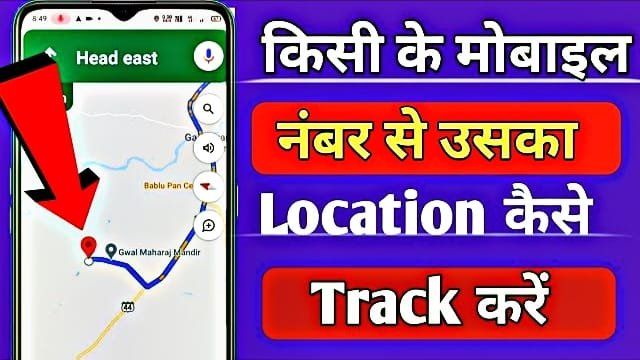People often search for quick ways to “track a phone number” — whether to find a lost device, keep tabs on family for safety, or verify where a delivery driver is. But there’s a big difference between legitimate, consent-based tracking and invasive or illegal surveillance. This article explains practical, lawful methods you can use (or recommend to visitors) to find a phone’s location, plus limits, privacy concerns, and steps to protect yourself.
1. The golden rule: consent and legality first
Before any method: you must have the consent of the person being tracked or a lawful justification (e.g., you’re the device owner, a parent of a minor, or you’ve obtained a court order). Stalking or tracking someone without permission is illegal in many jurisdictions and unethical. This article focuses on lawful, consent-based tools and official routes.
2. Built-in device location tools (best for lost phones & family use)
Apple — Find My (iPhone, iPad, Mac)
- What it does: Shows device location on a map, plays a sound, puts the device in Lost Mode, or remotely erases it.
- How to use: On another Apple device, open Find My app or visit iCloud.com → Find iPhone. Sign in with the Apple ID that’s linked to the device.
- Good for: Lost/stolen devices (if the owner enabled it), family location when using Family Sharing.
Android — Find My Device (Google)
- What it does: Locates Android devices tied to your Google account, plays a sound, locks the device, or erases it.
- How to use: Visit google.com/android/find and sign in to the Google account associated with the device.
- Good for: Lost phones, factory reset protection when enabled.
Pros & limitations
- Pros: Reliable, integrated, designed for device recovery and safety.
- Limitations: Device must be powered on, have location services enabled, and be connected to the network (cellular/Wi-Fi). These services require the device owner’s account credentials or explicit Family Sharing settings.
3. Location sharing in messaging & mapping apps (consent-based, easy)
WhatsApp — Live Location
- Open a chat → attach → Location → Share live location → choose duration.
- Use case: Meetups, safety checks, sharing live ETA.
Google Maps — Location Sharing
- Open Google Maps → profile icon → Location sharing → Share location with a contact for a set time or until turned off.
- Use case: families, friends, tracking a delivery driver with permission.
Apple Messages — Share My Location
- In Messages, tap contact → info → Share My Location or use Family Sharing.
- Use case: iMessage users, family safety.
Pros & limitations
- Pros: Explicit consent, user-controlled duration, frequently used for real-time coordination.
- Limitations: Both parties must have the relevant app and must initiate sharing. Turned off easily by the sharer.
4. Carrier-assisted location (when consent or legal process exists)
Mobile network carriers can approximate a phone’s location using cell tower triangulation or GPS data. This method is usually:
- Accessible to: the account holder (for their own device), or to law enforcement with a legal request/subpoena.
- How to access: Contact the carrier’s customer service for lost-device support or legal compliance offices for official requests.
- Accuracy: Varies — from 10s of meters (GPS) to hundreds of meters (cell tower).
Important: Carriers will not give out location data to random callers. They require authentication and/or legal paperwork.
5. When to involve law enforcement
If you suspect a crime (kidnapping, stalking, assault) or your loved one is in immediate danger, contact local authorities. Police can request emergency location data from carriers. Keep details ready: phone number, account info, and why there is a safety concern.
6. What not to do (dangerous and illegal)
- Don’t use unknown “spyware” or stalker apps that promise covert tracking — these are often illegal and unethical.
- Don’t attempt to spoof caller ID, intercept communications, or use IMSI catchers/fake towers.
- Don’t try to trick people into sending location data through phishing or social-engineering.
Explaining these methods — even at a high level — can enable wrongdoing, so avoid coaching readers on bypassing consent or privacy protections.
7. Best practices and privacy tips
- Always get clear consent. Prefer written (text) permission when possible.
- Explain purpose & duration. Tell the person why you need the info and how long it will be used.
- Use built-in tools. They’re more secure and have user controls.
- Disable sharing when done. Remind users to turn off live sharing.
- Educate family members. Teach children and elderly relatives how to enable emergency sharing and what to do if they feel unsafe.
- Protect your own device. Use strong passcodes, enable two-factor authentication for accounts, and keep Find My / Find My Device turned on.
8. Sample scenarios & quick steps
Lost phone (iPhone):
- Sign into iCloud.com/find or use another Apple device.
- Select the device → view location.
- Activate Lost Mode or Play Sound.
Share location with a friend (Google Maps):
- Open Google Maps → profile → Location sharing.
- Tap Share location → choose the contact and time.
- Stop sharing when finished.
If you suspect illegal activity:
- Call emergency services immediately; provide the phone number, known details, and why you’re worried.
9. Final thoughts
Tracking a phone number’s location can be invaluable for safety, reunions, or recovering stolen devices — but it must be done responsibly. Use the device’s built-in features and popular apps for consent-based sharing, involve carriers or law enforcement only through proper channels, and never use covert or illegal tools. Educating your readers about both the capabilities and the legal and ethical limits will build trust and keep people safe.

